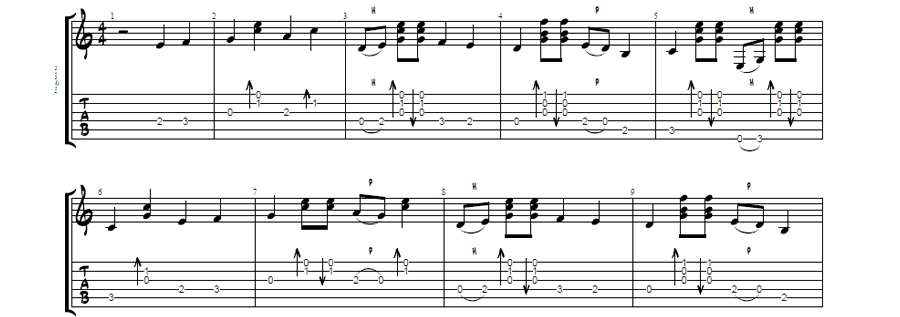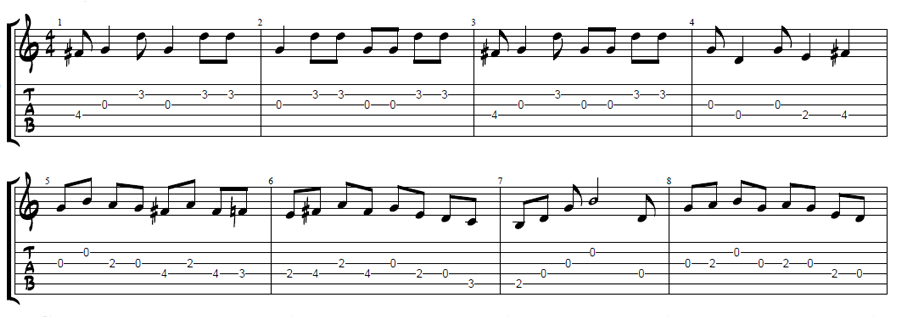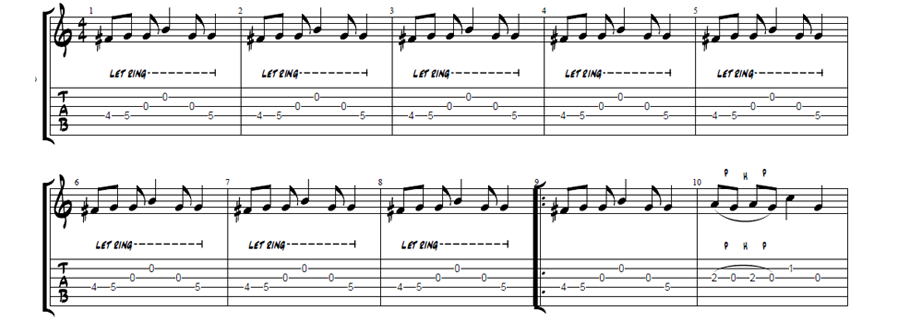How To Play Bluegrass Guitar
Luckily there aren't too many chords involved when playing bluegrass guitar, instead the focus is on our picking style and specific licks used in the genre.
If you wish to learn bluegrass on guitar, there are a handful of old songs that are going to be essential in your studies.
What is Bluegrass?
Even though bluegrass started around the 1940's, it was driven by nostalgia and a love for old time music.
In the 1800's the banjo was the prominent instrument and used heavily in the famous jigs, reels, and Appalachian folk music of the day.
These rhythms became more syncopated, and they began branching out.
Ragtime syncopation led to jazz and swing on one end, and country and rock n roll on the other. Bluegrass is a little in between with its use of syncopation, yet it is mostly all stringed instruments, eschewing the need for a drummer to keep the beat.
With instruments like banjos, fiddles, mandolins, upright bass, and guitars; bluegrass is more a neighborhood get together or jam, rather than a normal band.
Which is very helpful for new players as it is easier to go and find groups to just sit and play with.
Bluegrass is nothing complicated, there are a few specific chord progressions, rhythms, and tunes that make the genre up.
The hard part is putting in the practice, that way your technique and method is proper.
Otherwise, it won't sound like bluegrass!
Chord and Chord Progressions used in Bluegrass
One of the main differences between old-time and bluegrass is how the songs are structured.
Old-time songs are played as is with a normal lead and accompaniment, while bluegrass takes inspiration from jazz and the players will take turns improvising. However, it is mostly done over simple chord progressions.
Since it builds on Appalachian and Celtic folk tunes you will be using basic progressions like the I-IV-V or the vi minor thrown in on occasion.
In some folk and bluegrass jams you will play every song in a 1-4-5! (if you want to explore deeply the chord progressions thing, check 52 Chord Progressions | Learn How To Connect Chords and Create Great Songs).
Now that's not to imply that you will not be dealing with any extended chords or more complicated harmonies.
Often in country and bluegrass it is the vocals that add those extra notes, with a little dissonance to give it that familiar "twang".
A common key will be G, as most 5 string banjos are tuned to an open G.
That doesn't mean they can only play in G, it's just the easiest (and folk music is never meant to be hard). Other common keys are C, D, A; the ones that most people can sing to.
A capo is almost essential in bluegrass guitar. That way you can switch to keys that may work better for other instruments or different songs.
And mostly so you can use the same fingering techniques that you already have memorized.
If you can play a bluegrass lick in G-C-D, then a simple capo two frets up will give you A-D-E. No one will fault you for capos in bluegrass, even the mandolin players use them! Now the chords and progressions are the easy part.
Instead there are a variety of licks to learn, which are all in the most common songs played.
Many of the licks and riffs are chromatic bass runs and other embellishments, which when done correctly sound cool.
But first, the most important practice will be in your picking hand, to get the basic style of the bluegrass vibe.
Bluegrass Popular Songs to Try
Here below you find the tabs for 4 popular bluegrass tunes.
Bluegrass Guitar Tips And Tricks
The mandolin player Bill Monroe is often known as the father of bluegrass so his band is the gold standard of comparing other bluegrass variations.
The music is focused on the offbeat and this is accomplished with mandolin percussive chops, upright bass string slaps, banjo rolls, and melody often being played on the fiddle or flat-picked out on guitar.
- Like ragtime so much focus is put on the offbeat that it keeps the drive and tempo moving in bluegrass. Start with basic up and down 1/8 notes on one string, keep each hit clean and in time so you can play properly.
- Keep your practice patterns slow at first and make sure to accent the proper beats as you pick. You want to get to the point where your flat-picking flows from note to note.
- The up and down motion needs to continue even as you move to another string. This isn't a genre where we are concerned with pick efficiency, but more with the picking keeping that bluegrass tempo. Watch the wrists of the best players and you will see they keep going!
- As your basic flatpicking progresses start putting more emphasis on the offbeat yet keeping that flow. Once you have the basic picking down you can start learning specific bluegrass licks. Just be sure to pick and accent them with that same flow.
- After you have the muscle memory in your picking hand you will want to start embellishing with your chord hand . Use bass runs, turnarounds, chromatic slides, any added melody, or syncopation (check the ebook Chords Domination to learn more chord shapes across all the fretboard). When you watch awesome bluegrass guitarists play, both of their hands stay very busy! It takes incredible dexterity to play bluegrass at high speeds!
The good news is that both hands will always be following familiar patterns.
So, while it is fast and amazing, it is also simply the runs and exercises repeatedly played above over similar chord progressions.
Even when you improvise and play new pieces there is always that familiar structure.
There are no bebop or atonal studies needed, the video below is a great example.
While they do briefly slip into a silly atonal and odd sounding part, for the rest of this comedy tune they are playing basic bluegrass licks.
Bluegrass bands can and will play more complicated progressions and jazz tunes.
Once you have the flatpicking and syncopation right, you can add these techniques to other genres.
In fact, if you really excel at the fast flatpicking, you may find other styles like ragtime and certain country genres a little easier to play.
Bluegrass Conclusion
Like a lot of folk music, bluegrass guitar takes such simple chords and riffs and turns it into complex sounding music with nothing but flatpicking and syncopation.
But it is not an easy journey to get to that point of skill, it will take a lot of practice and jamming along with others before both hands cooperate to make such great sounding music.
That's all for today.
To learn more about chord progressions (bluegrass, ragtime, jazz and other genres), check the ebook 52 Chord Progressions | Learn How To Connect Chords and Create Great Songs, and be sure to subscribe here to stay updated


